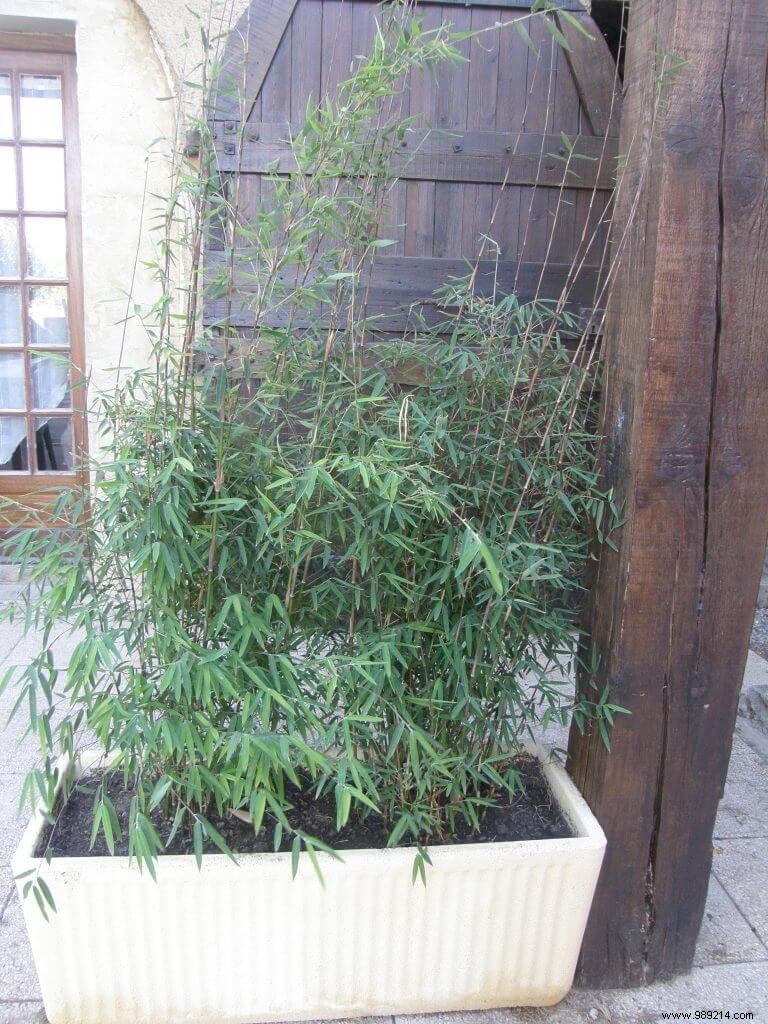Let’s answer the question that will arise from these answers:“what is a clumping bamboo? Dwarf bamboo? Plastic?…”
A clumping bamboo is a bamboo that does not have tracing rhizomes . Understand a bamboo that knows how to stay at home, in its corner and that will not conquer lands that do not belong to it, a non-invasive bamboo! All cespiteux, and the bamboos remain in place! As a reminder, the rhizome is a trailing stem, at ground level or just below the surface, from which roots and new shoots originate. These shoots are called culms because bamboo is a grass.
By extension a bunchy plant (being bunchy has nothing to do with "stop being bunchy"…) grows in a dense, compact clump. Admirable you say! It depends, the quality of cespiteux, (and is not cespiteux who wants, we know some that spread out…) is to make touradons at their base. Ouch, the touradons are back!
A Turadon is the annual growth of certain plants on their old roots and dead leaves, resulting in small mounds of dry, dense straw.
But rest assured, the bunch bamboo is not a turadon maker.
“Wow! But who is it that makes touradons? »
The fragrant bluff in fact, the matron!
But be careful, if you place the magic phrase in a discussion:"I found in my garden a fragrant cespitous blur smelling of coumarin, with a charming little turadon at the foot...", it's not only insiders who will smile .
Now, if you hadn't read this article and you are invaded by creeping bamboo, the ones that grow where you would have preferred to put strawberries, this link explains how to get rid of them.

You mentioned some advantages of bamboo, so it would be a shame not to take advantage of them. Nevertheless, bamboo tends to look elsewhere for what is going on! There are therefore several solutions to avoid that your garden and that of your neighbors are not invaded by a colonizing plant.
There are many varieties of bamboo, between dwarfs 30cm in height and giants exceeding 10 meters. Determining the maximum height is therefore a first rule to establish.
As explained above, there are two main types of bamboo, the "tracing" and the "cluster ". The latter form compact tufts without having the inconvenience of these tracing roots which…trace! So I recommend them. Not all points of sale have them, although the growing number of small gardens and the invasion of bamboo are reversing this trend. Bunch bamboo is one less thing to worry about.
If your choice is a bamboo of classic varieties, an invasive bamboo, the planting is done in a "pit" where a semi-rigid tarpaulin is affixed to the sides of the hole. "special bamboo" in order to retain the creeping "roots" (rhizomes in fact, which are underground stems like in irises, but much more vigorous in bamboo!) inside the pit.
Planting bamboo in planters is possible. Just adapt the volume of the container to that of the roots of the plant (the reverse is impossible!):a small container will accommodate a small bamboo.